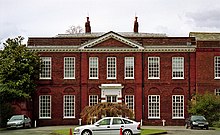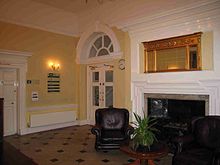
Duke of Marlborough is a title in the Peerage of England. It was created by Queen Anne in 1702 for John Churchill, 1st Earl of Marlborough (1650–1722), the noted military leader. In historical texts, unqualified use of the title typically refers to the 1st Duke. The name of the dukedom refers to Marlborough in Wiltshire.

Slough is a town in the unitary authority of the same name in Berkshire, England, bordering Greater London. It lies in the Thames Valley, 20 miles (32 km) west of central London and 19 miles (31 km) north-east of Reading, at the intersection of the M4, M40 and M25 motorways. It is part of the historic county of Buckinghamshire. In 2020, the built-up area subdivision had an estimated population of 164,793. In 2011, the district had a population of 140,713.

Berkshire is a historic county in South East England. One of the home counties, Berkshire was recognised by Queen Elizabeth II as the Royal County of Berkshire in 1957 because of the presence of Windsor Castle, and letters patent were issued in 1974. Berkshire is a county of historic origin, a ceremonial county and a non-metropolitan county without a county council. The county town is Reading.
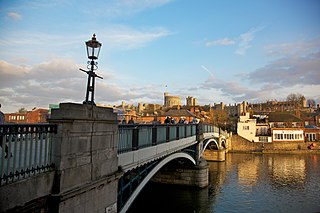
Windsor is a historic market town and unparished area in the Royal Borough of Windsor and Maidenhead in Berkshire, England. It is the site of Windsor Castle, one of the official residences of the British monarch. The town is situated 21.8 miles (35.1 km) west of Charing Cross, central London, 5.8 miles (9.3 km) southeast of Maidenhead, and 15.8 miles (25.4 km) east of the county town of Reading. It is immediately south of the River Thames, which forms its boundary with its smaller, ancient twin town of Eton. The village of Old Windsor, just over 2 miles (3 km) to the south, predates what is now called Windsor by around 300 years; in the past Windsor was formally referred to as New Windsor to distinguish the two.

Stoke Poges is a village and civil parish in south-east Buckinghamshire, England. It is centred 2.7 miles (4.3 km) north-north-east of Slough, its post town, and 2 miles (3.2 km) southeast of Farnham Common.

St James's Square is the only square in the St James's district of the City of Westminster and is a garden square. It has predominantly Georgian and Neo-Georgian architecture. For its first two hundred or so years it was one of the three or four most fashionable residential streets in London. It now has headquarters of a number of well-known businesses, including BP and Rio Tinto Group; four private members' clubs, the East India Club, the Naval and Military Club, the Canning Club, and the Army and Navy Club; the High Commission of Cyprus; the London Library; and global think tank and peace-promoter Chatham House.

Slough railway station, in Slough, Berkshire, England, is on the Great Western Main Line, halfway between London Paddington and Reading. It is 18 miles 36 chains down the line from the zero point at Paddington and is situated between Langley to the east and Burnham to the west. The station is just to the north of the town centre, on the north side of the A4.

Slough is a constituency represented in the House of Commons of the UK Parliament by Tan Dhesi, a member of the Labour Party, since the 2017 UK general election. Slough had previously been represented since 1997 by Fiona Mactaggart, also of the Labour Party, until she stepped down from politics.

Damansara Jaya is a township consisting of Sections SS22 and SS22A of the city of Petaling Jaya in the state of Selangor, Malaysia. It is situated within the Sungai Buloh mukim (subdivision) of the Petaling district. It covers an estimated area of 1.21 km2 and has an estimated population of 11,678 residents.

The Slough Trading Estate founded in Slough in Buckinghamshire in 1920, was an early business park in the United Kingdom. According to the estate's owners and operators, Segro, Slough Trading Estate consists of 486 acres (1.97 km2) of commercial property in Slough and provides 7,500,000 sq ft (700,000 m2) of accommodation to 500 businesses and has a working population of about 20,000 people. Slough Trading Estate is the largest industrial estate in single private ownership in Europe. There are over 600 buildings. The estate is home to 400 tenants from countries including the US, France, Italy, Japan, Germany and South Korea. Companies using the park include Fiat Group Automobiles, Centrica, Hibu, Electrolux, GSK, Mars Confectionery, Akzo Nobel, Virgin Media, O2, AxFlow UK, the datacentre operator Network-i and OKI Printing Solutions. It is also home to important small, medium and large businesses.

Slough Borough Council is the local authority for the Borough of Slough, in Berkshire, England. Slough is a unitary authority, having the powers of a county and district council combined. Berkshire is purely a ceremonial county, with no administrative responsibilities.

Charles Colyear, 2nd Earl of Portmore, KT, known as Lord Milsington to 1730, of Portmore House, Weybridge, Surrey, was a British Whig politician who sat in the House of Commons between 1726 and 1730, when he succeeded to the peerage as Earl of Portmore. He subsequently became a Scottish representative peer in the House of Lords. He was a racehorse owner and was known as Beau Colyear for his conspicuous dress.

Trafalgar Park is a large Georgian country house about 1.4 miles (2.3 km) northeast of the village of Downton in south Wiltshire, England, and 4.5 miles (7.3 km) southeast of the city of Salisbury. It was built in 1733 and is now a Grade I listed building. The house stands in extensive grounds on the left bank of the River Avon, opposite Charlton-All-Saints.

Herschel Grammar School is a co-educational grammar school with academy status, located in Slough, Berkshire, England. The headteacher is Mrs Joanne Rockall. The school has around 900 pupils, 250 of whom are in the sixth form.
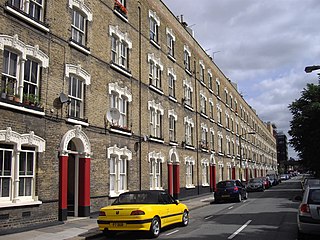
The Pullens Buildings, also known as the Pullens Estate, are some of the last Victorian tenement buildings surviving in London, England. In the Walworth, Newington area, they are near Elephant and Castle and Kennington Underground stations. Located in Amelia Street, Crampton Street, Iliffe Street, Penton Place and Peacock Street, they are protected by Conservation Area status granted by Southwark Council.
Heatherdown School, formally called Heatherdown Preparatory School, was an independent preparatory school for boys, near Ascot, in the English county of Berkshire. Set in 30 acres (12 ha) of grounds, it typically taught between eighty and ninety boys between the ages of seven and thirteen and closed in 1982.
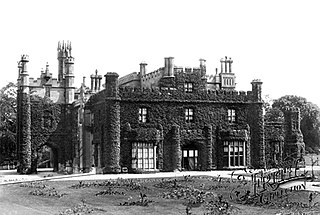
Rood Ashton House was a country house in Wiltshire, England, standing in parkland 0.5 miles (0.80 km) northeast of the village of West Ashton, near Trowbridge. Built in 1808 for Richard Godolphin Long, it was later the home of the 1st Viscount Long (1854–1924).

Godolphin School is an independent boarding and day school for girls in Salisbury, England, which was founded in 1726 and opened in 1784. The school educates girls between the ages of three and eighteen.

The King’s House is a Grade I listed building in Salisbury Cathedral Close, Wiltshire, England. Since 1981 it has accommodated the Salisbury Museum and associated galleries.
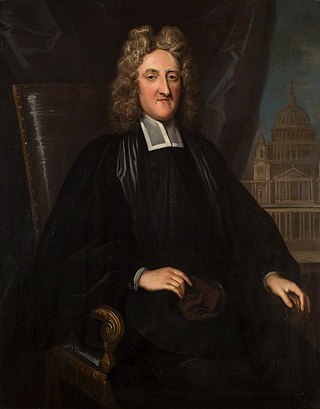
Henry Godolphin (1648–1733) was a Provost of Eton College and Dean of St. Paul's Cathedral in London, a position in which he clashed with Sir Christopher Wren in the period when the new cathedral had reached the finishing touches.
